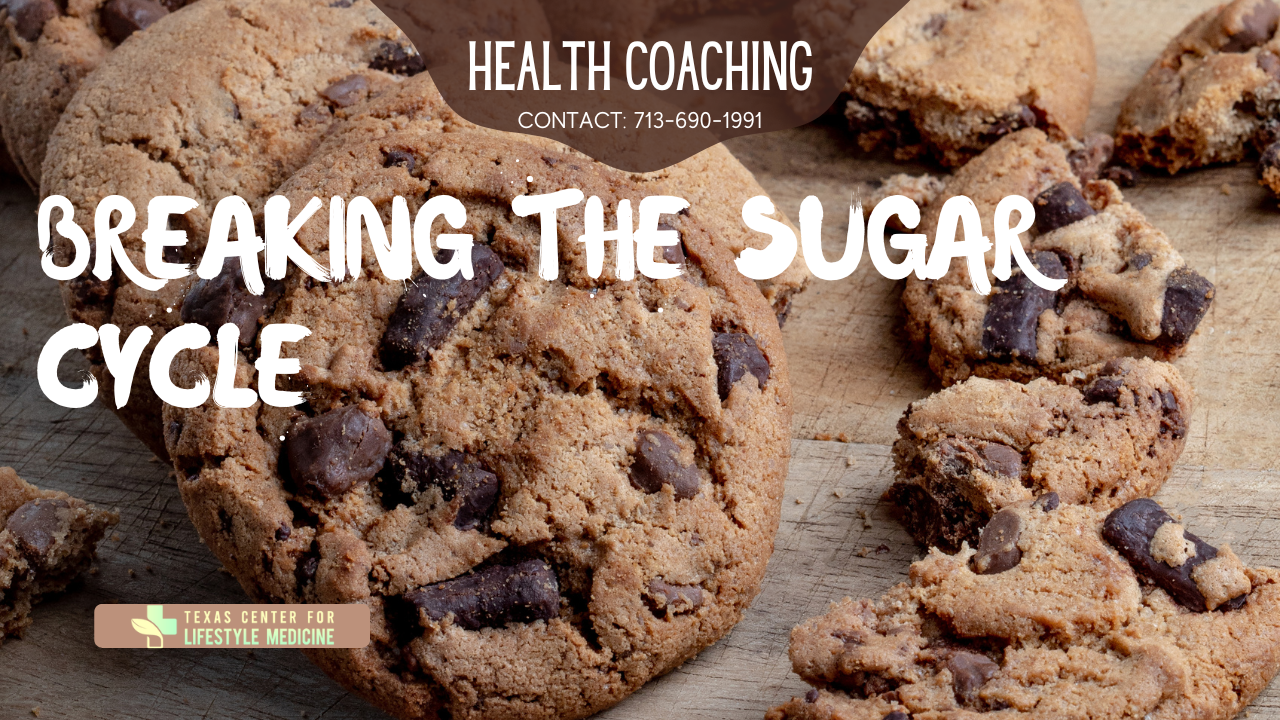How is your Relationship with Sugar?

We live in a society that has made a diet rich in sugars, added sugars, and processed foods the new norm. However, as with many other things, normal does not mean healthy. If you have ever struggled with cravings, you know just how hard it is to stop eating sugar and carbs once you start. Studies have revealed that sugar is highly addictive, for several reasons. It causes the hormones, leptin and ghrelin, which control hunger cues to become dysregulated, leading to more hunger for quick energy. It also feeds pathogenic bacteria in the gut, which send signals to the brain to encourage that they be fed more of their sustenance. Sugar also causes drastic shifts in neurotransmitters including dopamine, making it 8 times more addicting than cocaine. According to research, sugar also has similar impacts on the brain as opioid drugs. This is why many feel that they are a slave to sugar once it makes its way into their diet. So what are we to do if we are already at that point?
From a health perspective, most of us are aware of the negative effects of sugar on our health, but the instant gratification often outweighs the risks we weigh at the moment. Will-powering our way through cutting back on sugar will often only get us so far. Therefore, we have a different approach to changing the way we see the place of sugar in our diet. Enter the concept of primary foods, as described by IIN, the Institute for Integrative Nutrition. IIN describes primary foods as those that consist of aspects in life that bring meaning, life, and health to our day but have nothing to do with the food we eat. However, when our primary food wants or needs are not being filled, we often tend to rely on secondary food, aka the food we eat, as a source of fulfillment, comfort, or feeling of control.
Try this insightful activity to gauge where you may need to invest a bit more time and energy in order to fill your cup. Make a list of activities where you tend to spend the majority of your time each day. Here are some common examples:
- House work
- Physical activity
- Career
- Family life
- Social support/Community
- Spirituality
- Health/Wellness
- Relationships
- Finances
- Cooking healthy meals
- Education/Career advancement Training
After determining where most of your time is spent each day, not try to determine which activities bring you the most joy or sense of purpose. You may even want to make a separate list, indicating activities/aspects of life that you desire. Now indicate how much time you give to those tasks/activities. Most people realize after completing this activity that they are actually not prioritizing or making time for the things that will advance their path toward their current values. This usually tends to breed a sense of resentment and decreased fulfillment from activities in the day. Often people notice that food, especially foods that impact our neurotransmitters drastically, tend to become a source of fulfillment when we are not engaging in activities that bring us loads of fulfillment throughout the day. Use this activity as a check in when you are experiencing
Of course, there is also the physical side involved in sugar cravings. When we lose sleep, experience excess stress, or even over-exercise, we may have increased cravings for simple carbs and sugar for more energy, when we really would benefit more from rest and sleep. Keeping blood sugars stable throughout the day by focusing on high quality nutrient-dense meals with adequate protein, fiber, and healthy fats will provide stable and consistent energy versus an instant dose of energy followed by an abrupt crash.
When trying to decrease sugar cravings, many people find it extremely challenging to focus solely on cutting back on sugars gradually. When it comes to sugar, the more often you eat it, the more you will crave it, due to its impact on neurotransmitters and the brain. Therefore, many have to resort to cutting out all processed sugar for a time, and replacing it with fruits, and safe alternatives, such as monk fruit and stevia. Studies show that just about 2 weeks after sugars have been cut out of the diet, cravings will subside. There is hope! After breaking the addictive cycle to sugar, it can be helpful to experiment with a nutrition plan and balance that works for you when it comes to the degree by which you enjoy sugar.
When maintaining adequate nutrition and a healthy relationship with food, we recommend experimenting with what will work for you, your lifestyle, and will ultimately help you maintain mental and physical wellness. For some, this may look like avoiding all processed sugar, while others feel that they can enjoy it moderately or on special occasions without suffering mental or physical affects. We highly recommend working with a health expert to help you create a unique plan for your nutritional needs and ensure that you always have a great relationship with your food!
Contact TCLM to get started in your healing journey, with medical, nutrition, and mind-body support!
Resources:
Integrative Nutrition. “Primary Food.” Institute for Integrative Nutrition, Integrative Nutrition, 29 Jan. 2021, https://www.integrativenutrition.com/blog/2008/03/26/primary-food.
Avena, Nicole M, et al. “Evidence for Sugar Addiction: Behavioral and Neurochemical Effects of Intermittent, Excessive Sugar Intake.” Neuroscience and Biobehavioral Reviews, U.S. National Library of Medicine, 2008, https://www.ncbi.nlm.nih.gov/pmc/articles/PMC2235907/.
Health, INTEGRIS. “How to Break a Sugar Addiction.” Integris, https://integrisok.com/resources/on-your-health/2022/june/how-to-break-a-sugar-addiction#:~:text=The%20Mayo%20Clinic%20recommends%20taking,by%20cutting
%20out%20sugary%20drinks.
